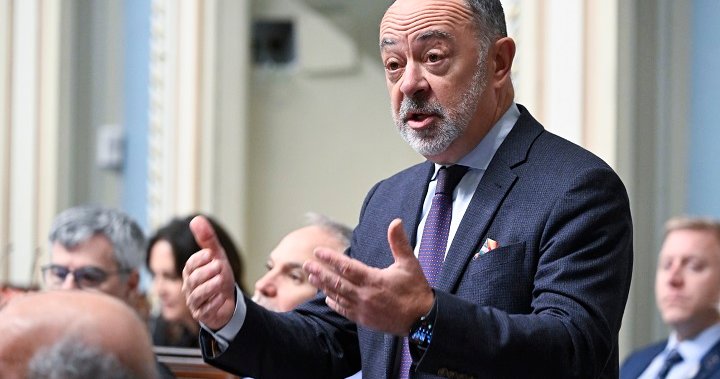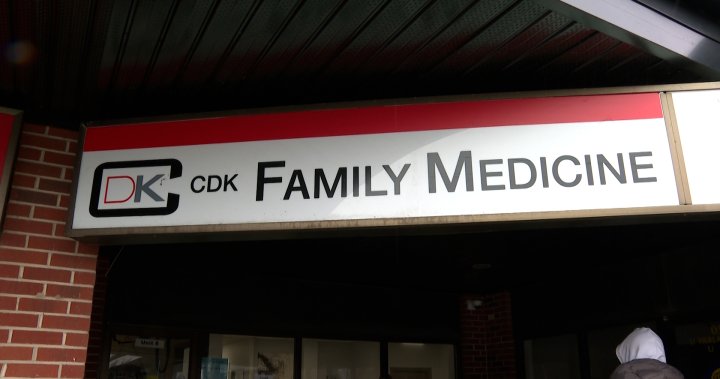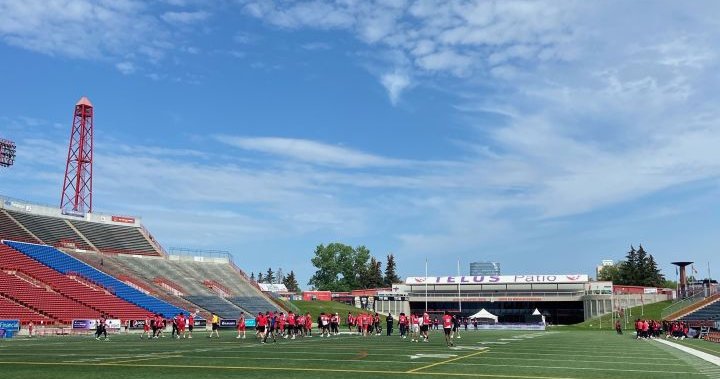The Alberta government announced it is launching a 15-year Passenger Rail Master Plan on Monday, which aims to increase passenger rail service in the province.
The plan will be split into six parts, including:
- A commuter rail system connecting Calgary International Airport to the city’s downtown core
- A commuter rail system connecting the Edmonton International Airport to the city’s downtown
- Regional rail lines from Calgary and Edmonton to Banff and Jasper national parks
- A regional rail line between Calgary and Edmonton, with a local transit hub in Red Deer
- A hub connecting the provincial rail system to LRT systems in big cities
- A rail line connecting Grande Prairie and Fort McMurray
Expanding rail service has been discussed extensively for the past 15 years in Alberta but Premier Danielle Smith says the time to move forward is now with record population growth and more crowded highways.
This is a shift from a report published by the Standing Committee on Alberta’s Economic Future in 2014, which said the province should not invest in a high-speed rail system between Edmonton and Calgary because the population of the corridor “is not sufficient to support the profitable operation of such a system.”
The report recommended that the Alberta government include plans to expand light-rail transit and regional transportation system development into its long-term transportation infrastructure strategic plan instead.
Since the 2014 report was published, an additional 1 million people moved to the province.
“Those of us who commute regularly already see and experience our province’s busy roads and highways,” Smith told reporters in Calgary on Monday.
“Expanding our roads, freeways and highways to be six or eight or 10 lanes all the way across is not always feasible, nor is it always wise.”
Smith added the Passenger Rail Master Plan will assess the feasibility of passenger rail in Alberta, including regional, commuter and high-speed services.
The plan will also look forward decades and identify concrete actions that can be taken now as well as in the future to build the optimal passenger rail system for the province including a cost-benefit analysis and determining what is required for the vision to come to fruition.
A Crown corporation similar to Metrolinx in Ontario will be set up to develop the infrastructure needed and oversee daily operations and plan for future system expansion.
Breaking news from Canada and around the world
sent to your email, as it happens.
Alberta’s Transportation Minister Devin Dreeshen said construction could potentially start in 2027 but did not identify which project will receive the green light first.
“We are serious. I think it would be very easy just to throw money at a proponent who walks by and say, ‘OK, let’s start building trains in Alberta,’” Dreeshen said.
“We’re actually taking the time to develop what a provincewide network could be, and do that feasibility study and cost analysis to really understand it as opposed to jumping in with a new government announcement.”
David Cooper, founder of Leading Mobility, said Monday’s announcement is significant because conversations around a potential rail line between Edmonton and Calgary have been around for a long time.
However, the province needs to find out what is actually feasible because rail projects can take anywhere from five to 10 years to complete.
“Having the province look more broadly (at) what their role could be at connecting communities not only in the construction and funding of these next significant investments, but also the potential operator of that is pretty significant and pretty huge,” he told Global News on Monday.
“We need to scope out what is actually possible and what’s actually feasible. I think people need to keep in mind (that) it’ll take a year to do the plan, but it’s still going to be pretty significant amount of time to actually start delivering on projects in this plan.”
Cooper added it’s hard to tell which project will be developed first because the province still has to figure out which project is the top priority.
“There’s a whole suite of projects that could be looked at as some of the first ones, but you can’t actually build anything until you scope out what is actually the priorities and how you’re going to build it,” he said.
“Most importantly, the province saying that they’re looking to potentially fund and potentially also fund the operating of this is pretty significant to actually make these projects happen in real life.”
Donna Kennedy-Glans, who was an MLA during the last study in 2014, said she is grateful that there is a plan in place because all the ideas have been “piece meal” from stakeholders and municipalities.
She told Global News that the Passenger Rail Master Plan makes a lot of sense because it means there is a process and an idea in mind.
“Somebody got an idea and they pitched that there’s a place to go and there’s a process in place. How does their plan coming from wherever land within (the province’s) big idea? I think that’s smart. That’s just a smart thing to do,” Kennedy-Glans told Global News.
Kennedy Glans said she wants the province to prioritize the proposed rail corridor between Edmonton and Calgary because traffic on Highway 2 can be a “nightmare.”
“I used to take the bus as much as possible so I could actually work on the way and not have to worry about if I’m going to go into the ditch on this next hill,” she said.
“We’re changing quickly … The world is changing and we have to be kind of ahead of it, that’s really important. I don’t think we have the luxury of sitting around and waiting for someone like Elon Musk to show up with this idea.”
A spokesperson for Liricon, a private company that first pitched a passenger rail system between Calgary and Banff to the province in 2022, said he applauds the province’s interest in a rail line in the area but said it needs to quickly advance the company’s proposal in parallel with masterplan studies.
“This is necessary so that Liricon and our (Calgary Airport Banff Rail) development partner Plenary, can secure more than $1 billion in committed Canada Infrastructure financing in advance of the next Federal Election,” Jan Waterous, a managing partner of Liricon, said.
“Assuming the Province advances CABR’s financial evaluation and project development agreement in parallel with the rail masterplan, thus allowing us to secure CIB funding, CABR could drive the first spike in 2027 and last spike in 2029.”
— with files from Bill Graveland, The Canadian Press.
© 2024 Global News, a division of Corus Entertainment Inc.




